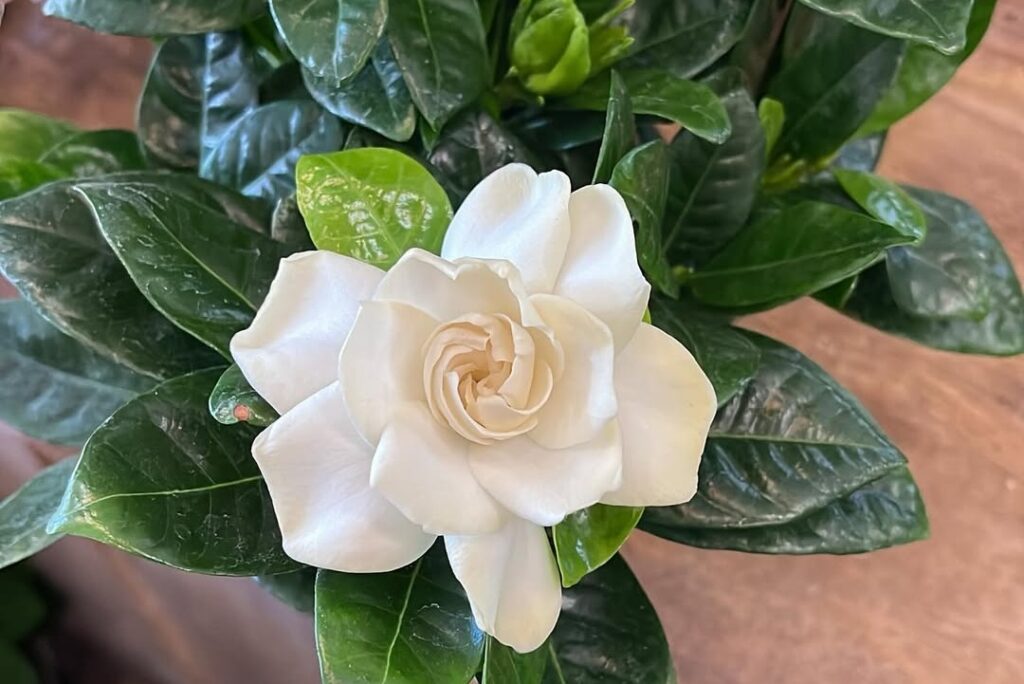Do you dream of having a home filled with the intoxicating scent of gardenias, but think it’s an impossible task? Fret not! With the right tips and tricks, you can successfully grow gardenias indoors and enjoy their beauty year-round. This ultimate guide will walk you through everything you need to know to keep your indoor gardenia plants happy and thriving.

Contents
Understanding Gardenias
Before we dive into the specifics of indoor gardenia care, it’s important to understand a bit about this beautiful plant. Gardenias (Gardenia jasminoides) are evergreen shrubs known for their glossy, dark green leaves and fragrant white flowers. Originally from tropical and subtropical regions, gardenias prefer warm, humid environments, which can be a challenge to replicate indoors. However, with proper care and attention, you can create the perfect conditions for your gardenia to flourish.
Choosing the Right Pot and Soil
The Ideal Pot
The first step in caring for your indoor gardenia is selecting the right pot. Choose a pot that is slightly larger than the root ball of the plant, with good drainage holes to prevent water from sitting at the bottom. Gardenias do not like to sit in water, so it’s crucial to have proper drainage to avoid root rot.
Perfect Soil Mix
Gardenias thrive in well-draining, acidic soil. A mix of peat moss, perlite, and potting soil in equal parts works well. You can also use a commercial potting mix specifically designed for acid-loving plants. Make sure the soil is loose and well-aerated to allow the roots to breathe.
Lighting and Temperature Requirements
Bright, Indirect Light
Gardenias need plenty of light to bloom, but they don’t like direct sunlight. Place your gardenia in a spot where it will receive bright, indirect light for at least six hours a day. A south-facing window with sheer curtains can be an ideal location. If your gardenia isn’t getting enough light, consider using a grow light to supplement natural light.
Maintaining the Right Temperature
Gardenias prefer consistent temperatures between 60-75°F (15-24°C). Avoid placing your gardenia near drafts, heating vents, or air conditioners, as sudden temperature changes can stress the plant. It’s also important to keep the humidity levels high, as gardenias love a humid environment. You can increase humidity by using a humidifier or placing a tray of water and pebbles near the plant.
Watering and Fertilizing
Proper Watering Techniques
Watering gardenias can be a bit tricky, as they don’t like to be too wet or too dry. The key is to keep the soil consistently moist but not soggy. Water your gardenia when the top inch of soil feels dry to the touch. Use room-temperature water and avoid using water that has been softened, as the salts can harm the plant. It’s also helpful to mist the leaves regularly to maintain humidity.
Feeding Your Gardenia
Gardenias are heavy feeders and require regular fertilization to thrive. Use a balanced, acid-loving plant fertilizer every two to four weeks during the growing season (spring and summer). You can also use an organic fertilizer like fish emulsion or seaweed extract. Be careful not to over-fertilize, as this can lead to leaf burn and other issues.
Pruning and Repotting
Pruning for Health and Shape
Regular pruning helps maintain the shape of your gardenia and encourages new growth. Prune your gardenia after it has finished blooming, removing any dead or yellowing leaves and spent flowers. You can also trim back any leggy growth to promote a fuller, bushier plant.
When and How to Repot
Gardenias generally need to be repotted every two to three years. Repot your gardenia in the spring, just before the growing season begins. Choose a pot that is one size larger than the current pot and refresh the soil mix. Be gentle with the roots, and water the plant thoroughly after repotting.
Common Pests and Problems
Identifying and Treating Pests
Indoor gardenias can be susceptible to pests like aphids, spider mites, and whiteflies. Regularly inspect your plant for any signs of pests, such as yellowing leaves, sticky residue, or webbing. If you notice any pests, treat your gardenia with insecticidal soap or neem oil, following the instructions on the label.
Troubleshooting Common Issues
Gardenias can be finicky, and you may encounter some common problems. Here are a few tips for troubleshooting:
- Yellowing Leaves: This can be caused by overwatering, underwatering, or a nutrient deficiency. Adjust your watering schedule and consider adding a fertilizer.
- Bud Drop: Gardenias may drop their buds if they experience sudden temperature changes or lack of humidity. Ensure consistent temperatures and maintain high humidity levels.
- Leaf Burn: This can occur if the plant is getting too much direct sunlight or if it has been over-fertilized. Move your gardenia to a spot with indirect light and reduce fertilization.
Enjoying Your Indoor Gardenia
With the right care and attention, your indoor gardenia will reward you with beautiful, fragrant blooms. Remember to be patient, as gardenias can be slow to adjust to new environments. By following the tips in this guide, you’ll be well on your way to growing a healthy, happy gardenia plant indoors.
